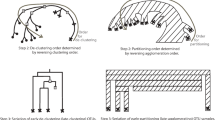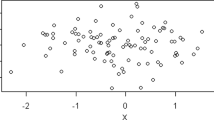Abstract
Modern methods of data analysis are rarely used in archaeology. Meanwhile, it is archaeology that opens up impressive opportunities for various interdisciplinary studies at the junction of archaeology, chemistry, physics and mathematics. XRF analysis, which has long been used to determine the qualitative and quantitative composition of discovered archaeological artifacts, among other things, provides arrays of digital information that can be used by machine learning methods for more accurate clustering or classification of artifacts. This is especially true for artifacts that are presented in the form of fragments of ancient ceramic amphorae or glass vessels. Such fragments, as a rule, represent the mass of the fragments mixed among themselves. There is a need to divide them into groups and then restore them as a single artifact from the detected fragments of one group. This paper presents a comparative analysis of the application of different clustering methods to combine artifacts into groups with similar properties.
Access this chapter
Tax calculation will be finalised at checkout
Purchases are for personal use only
Similar content being viewed by others
References
Bishop, L.R., Holley, R.G., Rands, R.L.: Ceramic compositional analysis in archaeological perspective. In: Advances in Archaeological Method and Theory, vol. 5, pp. 275–330 (1982)
Petit-Dominguez, D.M., Gimenez, R.G.: Chemical and statistical analysis of Roman glass from several Northwestern Iberian archaeological sites. Mediterr. Archaeol. Archaeom. 14, 221–235 (2014)
Tryon, R.C.: Cluster Analysis: Correlation Profile and Orthometric (factor) Analysis for the Isolation of Unities in Mind and Personality. Edwards Brother, Inc., Ann Arbor (1939)
Pearson, K.: On lines and planes of closest fit to systems of points in space. Philos. Mag. 2, 559–572 (1901)
Hartigan, J.A., Wong, M.A.: A k-means clustering algorithm. J. R. Stat. Soc. Ser. C (Appl. Stat.) 28, 101–108 (1979)
Comaniciu, D., Meer, P.: Mean shift: a robust approach toward feature space analysis. IEEE Trans. Pattern Anal. Mach. 24, 603–619 (2002)
Ester, M., Kriegel, H.P., Sander, J., Xu, X.: Density-based algorithm for discovering clusters in large spatial databases with noise. In: Proceedings of the 2nd International Conference on Knowledge Discovery and Data Mining, pp. 226–231 (1996)
Joe, H., Ward, J.: Hierarchical grouping to optimize an objective function. J. Am. Stat. Assoc. 58, 236–244 (1963)
Rousseeuw, P.J.: Silhouettes: a graphical aid to the interpretation and validation of cluster analysis. J. Comput. Appl. 20, 53–65 (1987)
Calinski, T., Harabasz, J.: A dendrite method for cluster analysis. Commun. Stat. 3, 1–27 (1974)
Acknowledgment
The research for this paper was financially supported by the Russian Federal Ministry for Education and Science (Grant No. 16-57-48001 IND_omi).
Author information
Authors and Affiliations
Corresponding author
Editor information
Editors and Affiliations
Rights and permissions
Copyright information
© 2019 Springer Nature Switzerland AG
About this paper
Cite this paper
Mikhailova, N., Mikhailova, E., Grafeeva, N. (2019). The Application of Clustering Techniques to Group Archaeological Artifacts. In: Rocha, Á., Adeli, H., Reis, L., Costanzo, S. (eds) New Knowledge in Information Systems and Technologies. WorldCIST'19 2019. Advances in Intelligent Systems and Computing, vol 930. Springer, Cham. https://doi.org/10.1007/978-3-030-16181-1_5
Download citation
DOI: https://doi.org/10.1007/978-3-030-16181-1_5
Published:
Publisher Name: Springer, Cham
Print ISBN: 978-3-030-16180-4
Online ISBN: 978-3-030-16181-1
eBook Packages: Intelligent Technologies and RoboticsIntelligent Technologies and Robotics (R0)




